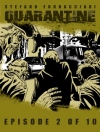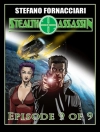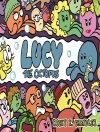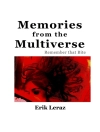Introduced by beloved Cuban science fiction author Yoss as one of the foundational novels of the genre, Miguel Collazo’s 1960s classic The Journey is a mind-opening parable of social progress, prophets and reluctant masses, and humanity’s metaphysical voyage inward.
On planet Ambar, long ago colonized by scientists who arrived by spaceship, inhabitants no longer live in cities. Generation after generation, Ambarians wander through the desert, the valley, and the ruins as the mysterious “symbols” loom in the sky. Once a new generation develops the ability to broadcast images, feelings and memories to others, they start to hope and wait for a life-changing transformation: The Journey.
Filled with intricate family trees, huge desert flowers, and intelligent automatons, Miguel Collazo’s evocative world traces the makings of a civilization that has lost its way and gradually rebuilds itself in a desolate landscape. This multi-generational saga highlights what binds us together as a community and the roles that memory, affection, and hope play in our history.
One of what Cuban science fiction great Daína Chaviano calls the “hexagon of top-notch, almost inimitable Cuban books of the genre, ” The Journey is essential reading for anyone interested in the roots of Cuban literature and science fiction.
关于作者
When he isn’t translating, David Frye teaches Latin American culture and society at the University of Michigan. Translations include First New Chronicle and Good Government by Guaman Poma de Ayala (Peru, 1615); The Mangy Parrot by José Joaquín Fernandez de Lizardi (Mexico, 1816), for which he received a National Endowment for the Arts Fellowship; Writing Across Cultures: Narrative Transculturation in Latin America by Ángel Rama (Uruguay, 1982); and several Cuban and Spanish novels and poems.












